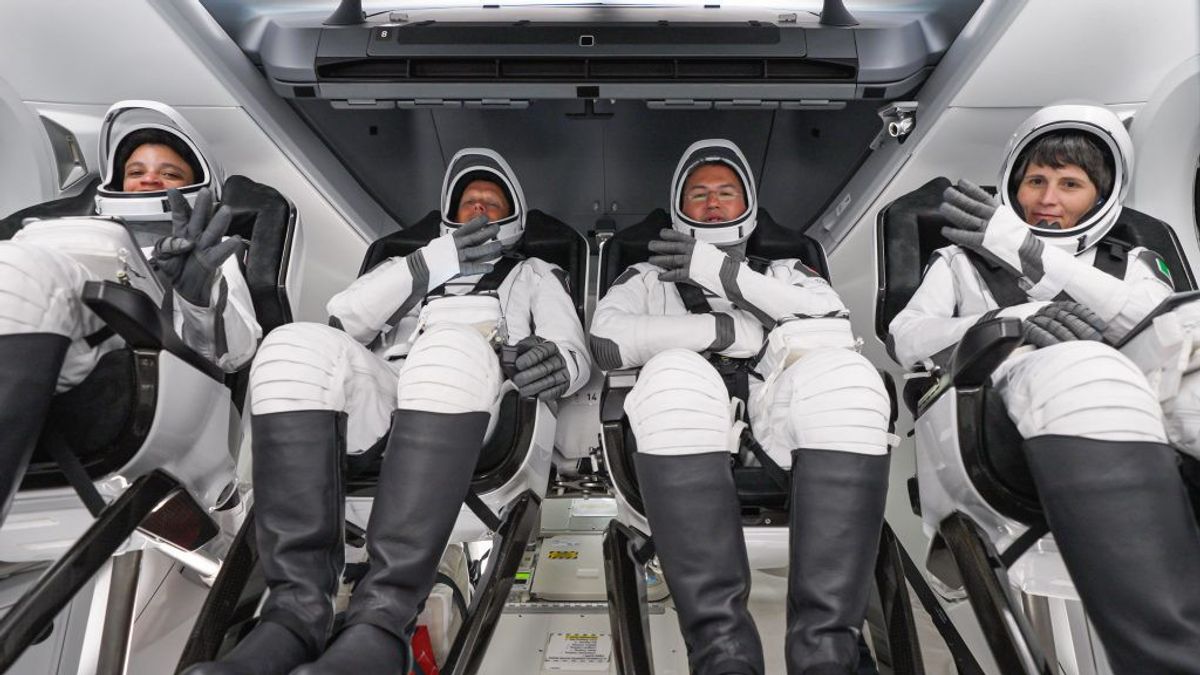


NASA has announced that they have selected Elon Musk's SpaceX to bring astronauts Sunita Williams and Barry Wilmore back from the International Space Station (ISS) next year. Williams and Wilmore have been on the ISS for over 80 days and were originally scheduled to return with Boeing's Starliner, but due to technical issues, their stay is being extended and they will now be returning with SpaceX's Crew Dragon spacecraft. NASA Administrator Bill Nelson explained the decision was made for the safety of the astronauts, as the Starliner's propulsion system presented too much risk. The news has also sparked discussions about rebuilding trust in Boeing among NASA officials.
National Aeronautics and Space Administration (NASA) has selected SpaceX's Crew Dragon spacecraft to bring astronauts Sunita Williams and Barry Wilmore back from the International Space Station (ISS) in 2023.
Williams and Wilmore have been on the ISS for over 80 days, initially scheduled to return with Boeing's Starliner spacecraft. However, technical issues with the Starliner's propulsion system have forced NASA to extend their stay.
After an investigation, NASA determined that the risks associated with the Starliner's propulsion system were too great for the safety of the astronauts. As a result, the agency chose SpaceX's Crew Dragon as an alternative.
NASA Administrator Bill Nelson explained the decision by saying, "We are committed to the safety of our astronauts, and after thorough review, we determined that the Starliner propulsion system presented too much risk. SpaceX's Crew Dragon has a proven track record of safety and reliability."
The decision to switch from Boeing to SpaceX has sparked discussions about rebuilding trust between NASA and Boeing. The Starliner's technical issues have raised concerns about Boeing's ability to meet NASA's safety requirements.
NASA officials have stated that they are working with Boeing to address the issues and ensure that the Starliner is safe for future missions. However, the agency has also made it clear that safety will be paramount in all decision-making.
1. Why were Williams and Wilmore's stay extended on the ISS? Due to technical issues with the propulsion system of Boeing's Starliner spacecraft.
2. Why did NASA choose SpaceX's Crew Dragon over Boeing's Starliner? NASA determined that the risks associated with the Starliner's propulsion system were too high for the safety of the astronauts.
3. What is the timeline for Williams and Wilmore's return? The exact date for their return has not yet been announced, but it is expected to be sometime in 2023.
4. Is the Starliner program still viable? NASA is working with Boeing to address the issues with the Starliner and ensure that it meets safety requirements for future missions.
5. What are the implications of this decision for NASA's relationship with Boeing? The decision has raised concerns about Boeing's ability to meet NASA's safety requirements and has sparked discussions about rebuilding trust between the two organizations.

As winter arrives in India, so does the hazardous air pollution. Delhi NCR's AQI has already crossed the 400 mark, making it crucial to invest in air purifiers, especially after Diwali. Dyson, Qubo, HomePure, and Philips have launched high-quality air purifiers with advanced features to tackle different types of pollutants and create cleaner indoor air. With prices ranging from Rs 5,000 to Rs 1 lakh, these purifiers are a practical and timely purchase for a healthier living.

In a recent family vlog, Indian celebrity couple Shoaib Ibrahim and Dipika Kakar shared their "natural" hair care routine for their son, using a homemade mask made with rice flour, flax seeds, and coconut oil. However, experts warn that what works for adults may not be suitable for babies, whose sensitive skin and scalp could react to the ingredients. While the ingredients may improve hair texture, they do not necessarily promote hair growth. Instead, a healthy diet and good scalp care are more important in maintaining healthy hair.

A recent consumer study has found multiple brands of soft contact lenses in the U.S. to contain "forever chemicals" that can be harmful to both the body and the environment. The study, conducted by the nonprofit organization Environmental Health Sciences, tested 18 varieties of popular contact lenses and found all of them to contain markers for PFAS. Brands such as Acuvue, Alcon, and CooperVision were among the list of affected products. This news serves as a cautionary lesson on the potential risks of overusing contact lenses.

On the birth anniversary of Dr. APJ Abdul Kalam, the ‘Missile Man’ of India, tributes pour in on social media celebrating his life, vision and impact. A visionary scientist, inspiring leader and true patriot, Dr. Kalam's humility, compassion and constant interaction with students continue to inspire generations. His tireless efforts in defense, science and youth empowerment have strengthened India's path towards self-reliance and his legacy continues to motivate young minds to dream big and work hard for the nation.

Recent studies have found that extreme heat, particularly when combined with high humidity, can have a significant impact on mental health. A study in India showed that when wet bulb temperature exceeded 27°C, the probability of reporting severe depression increased by 0.5%, even when the temperature was slightly lower. This finding is consistent with global reviews that have linked high temperatures to mood disorders, increased hospital admissions for psychiatric conditions, and even elevated suicide risk. The Lancet has also published evidence that rising temperatures worldwide are a growing threat to emotional and cognitive health.

In a meeting with university officials in Udaipur, Rajasthan Governor Hari Bhau Bagde stressed the importance of incorporating India's ancient knowledge traditions into academic research. He highlighted the deep repository of knowledge in India since ancient times and urged scholars and scientists to draw upon this tradition in their work. Bagde also suggested making ancient texts available in university libraries for study and research purposes, in order to shape the intellectual abilities and love for the nation among the younger generation.

John Clarke, Michel H. Devoret, and John M. Martinis have been awarded the 2025 Nobel Prize in Physics for their pioneering research into quantum mechanical tunnelling. Their discovery has opened new possibilities for quantum technologies, and will be formally presented on December 10, the anniversary of Alfred Nobel's death. This announcement follows the tradition of recognizing transformative contributions to science, and the award carries a prestigious prize of 11 million Swedish kronor.

The US-Japanese trio of Mary E Brunkow, Fred Ramsdell, and Shimon Sakaguchi have won the 2025 Nobel Prize in physiology or medicine “for their discoveries concerning peripheral immune tolerance". Through their research, they have shown how the immune system is kept in check and why serious autoimmune diseases do not affect everyone. Sakaguchi found a new class of T cells, while Brunkow and Ramsdell discovered the explanation behind a specific mouse strain's vulnerability to autoimmune diseases. Together, they have significantly advanced our understanding of immunology and autoimmune diseases.

Indian astronaut Shubhanshu Shukla, who recently completed a 20-day space mission, shared his insights and experiences at the convocation ceremony of Dr. APJ Abdul Kalam Technical University. He highlighted the importance of patience, focus, and the inevitability of change in achieving success, and urged the graduating class to actively contribute to shaping a fearless and ambitious India.

The Regional Meteorological Centre (RMC) in Chennai has issued a weather alert for parts of Tamil Nadu, with thunderstorms and light to moderate rainfall expected on Saturday. The alert was issued due to the strengthening of a cyclonic circulation in the Bay of Bengal, which is likely to intensify and form a low-pressure area. The system is expected to affect Tamil Nadu, Puducherry, and Karaikal, with some areas experiencing heavy rainfall and gusty winds. The public is advised to stay updated and take precautions, especially in hilly and western districts.